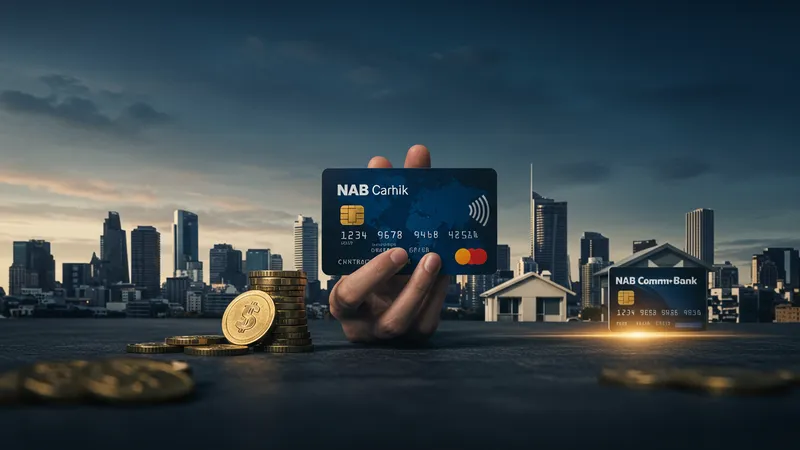

Every day, Australians use credit cards and loans to manage spending, cover big purchases, or fund life milestones. But what sets apart those who navigate credit with confidence from those who end up with endless balances and mounting interest charges? The true key lies in making borrowing decisions that achieve personal financial goals—without sacrificing future stability or freedom. Smart borrowing isn’t about maximizing how much you can access; it’s about strategically choosing credit tools and repaying them effectively, so debt remains a tool for progress instead of a lingering burden.
Behind the surface of “credit cards” and “loans,” there’s a rich world of features, rates, perks, and responsibilities—especially in the Australian market. From zero annual fee cards designed for budgeters to personal loans with flexible repayment timelines, knowing which product to use for each situation is essential. It goes far beyond just looking for the lowest interest rate. Australians who borrow with intention often find surprising benefits, such as tailored rewards, stronger credit scores, and less stress during major life changes.

Australians increasingly favour low-rate and zero-fee card options to save on interest, especially as cost of living pressures continue. Products like the Bendigo Bank Low Rate Credit Card and the St.George Vertigo appeal to those seeking transparent, easy-to-manage terms. Meanwhile, the American Express Essential Card stands out for its simplicity—no annual fee yet a competitive rate, making it ideal for everyday use without added costs. As for borrowing larger sums, ING and Westpac’s personal loans offer customizable features that help borrowers plan repayments around changing life circumstances or big savings goals.
Not all credit products are created equal. Many cards and loans now come with features designed to provide real value, from flexible repayment schedules to extensive rewards programs like Citi Rewards, which let users earn points on regular spending. Westpac Flexi Loan grants ongoing access to a pre-approved pool of funds, which works well for unexpected expenses. Home loans like those from ANZ not only help people move onto the property ladder but can also offer features like offset accounts to reduce total interest paid over time.
The differences in annual fees, purchase rates, and rewards prove crucial for Australians aiming to use credit smartly. For example, low-rate cards from big banks typically come with modest annual fees, while reward-heavy cards may charge more for perks that benefit frequent travellers or shoppers. Comparing these attributes is a direct way for consumers to match products with their own financial habits—and avoid paying for extras they won’t use.
Data from the Reserve Bank of Australia points to a notable trend: Australians carry lower average credit card balances than a decade ago, but the total number of credit and loan products has risen as people diversify sources. This showcases that, with financial literacy and intentional borrowing, there are clear paths to maintaining flexibility, controlling costs, and boosting overall financial freedom—even as lending options evolve in the local market.
The journey towards financial empowerment starts with the right choices and understanding how each credit card or loan serves your plans. But beyond these comparisons lies another layer: how different borrower needs, habits, and strategies shape the best use of these products. The deeper details reveal even more valuable insights ahead…
When evaluating credit cards for smarter borrowing in Australia, two factors almost always rise to the top: interest rates and annual fees. Low-rate cards like the CommBank Low Rate Credit Card and NAB Low Rate Card are designed for those who may occasionally carry a balance and wish to minimize interest expenses. By focusing on products with rates around the 13% range and moderate annual fees, Australians can limit the long-term cost of short-term borrowing—much lower than the typical 20%+ seen on many rewards cards.

No annual fee options—such as the American Express Essential Card and St.George Vertigo—represent a clever solution for people who pay balances in full each month and seek to avoid extra charges. For those who strictly repay before the due date, the annual fee plays a bigger role in total costs than the advertised interest rate. These cards let users sidestep yearly fees entirely, keeping borrowing simple and affordable for everyday transactions.
Reward cards, while often featuring higher standard purchase rates (for example, the Citi Rewards Credit Card), stand out for users keen to earn points toward travel, shopping vouchers, or cashback. However, these options are best utilized by disciplined spenders who clear their balance monthly—otherwise, interest charges quickly outweigh the value of earned rewards. Macquarie’s Platinum Card, combining a competitive rate with cashback offers, bridges the gap for those who want some perks without sky-high interest.
Context matters: Young professionals, frequent travelers, and families all benefit differently from various cards. University students often gravitate toward low-fee cards with strict spending limits, while families may prioritize rewards tied to groceries or fuel. Matching your typical spending and payment habits with the right product can free up resources for goals beyond servicing debt, illustrating the broader impact of truly strategic card choice.
Unsecured personal loans from prominent Australian providers like ING and Westpac are prime examples of how lending has adapted to meet changing needs. Flexible features appeal to both planners and those navigating unexpected situations. ING’s Unsecured Personal Loan, for instance, offers a clear, competitive rate and no ongoing fees, with loan amounts and terms that can be adjusted to suit a borrower’s project—be it a car, a wedding, or renovation.

Westpac’s Flexi Loan operates differently: Borrowers are given an approved pool of funds they can draw from as required, only paying interest on amounts used. The higher rate reflects this flexibility, which is ideal for those who may have irregular or unpredictable expenses. This design gives Australian borrowers more control without needing to reapply for new loans with every change in circumstance.
Mortgage products like ANZ Home Loans provide flexible repayment options, redraw facilities, and offset accounts—tools that can make a big difference to the overall interest paid and the pace of equity growth. Such features have become highly valued in Australia, where home ownership remains central to financial aspirations and lenders compete to offer smarter, more transparent loan terms.
Banks and non-bank lenders alike have begun to introduce digital application processes, instant approvals, and online management features. For Australians prioritizing speed and convenience, this evolution lowers barriers and gives more confidence throughout the borrowing process—yet it’s the tailored fit of the loan, not just convenience, that determines long-term financial freedom.
Even the smartest card or loan choice cannot deliver real financial empowerment without a disciplined repayment plan. Australians who consistently pay more than the minimum amount due on their credit card or loan accelerate their debt-free timeline and curtail the amount paid in interest. For example, paying just $50 or $100 above the minimum each month on a typical card can save hundreds of dollars in interest over a few years, transforming borrowing from a necessary evil into an actively managed financial tool.

Loan features like flexible repayment options—offered by ING Unsecured Personal Loan or redraw facilities with ANZ Home Loans—allow borrowers to make extra payments or redraw funds as their circumstances change. This creates a safety net for unexpected challenges and brings peace of mind, enabling borrowers to recover from setbacks without derailing their progress towards financial goals.
Effective use of rewards credit cards, such as Citi Rewards or Macquarie Platinum, hinges on strict monthly repayment discipline. If balances are carried forward, the value of points or cashback evaporates in the face of steep interest charges. Australians who leverage these cards well repay in full and treat rewards as a bonus, not a reason to overspend. For many, automating payments and tracking spending can be a game-changer, reducing mental overhead and the chance of costly missteps.
The Reserve Bank of Australia has tracked an ongoing shift: Households are using credit products less for luxury, more for smoothing out unpredictable costs and investing in life improvements. Australians focused on smart repayment strategies are leading this shift, using credit as a financial tool—never as a crutch.
In Australia, your credit score is directly influenced by how you use credit cards and loans. Timely repayments and responsible handling of available credit are positive signals to lenders, often leading to easier approval and potentially lower interest rates on future loan applications. Cards like the NAB Low Rate or CommBank Low Rate, when used wisely, can foster better creditworthiness over time, supporting broader financial ambitions such as home ownership or business investment.

Mismanagement, like missed payments or maxing out credit limits, can quickly erode the benefits otherwise attainable through smart borrowing. Fortunately, many Australian lenders have adopted responsible lending conduct—providing clear minimum payments, upfront disclosure of costs, and reminders—helping clients avoid late fees and credit score decline.
For Australians branching into larger loans, such as the ANZ Home Loan, a healthy credit profile can influence everything from the size of the deposit required to flexibility in repayment arrangements. Products featuring competitive rates, low fees, or innovative perks generally expect strong credit histories, rewarding those who balance multiple products intelligently.
Understanding the link between product selection, usage, and credit scoring empowers Australians to actively shape their financial options. With the right education and borrowing habits, consumers gain not just access to more attractive credit terms—but also the confidence to use these tools for ongoing financial freedom.
Bringing the pieces together, Australians who align their choice of credit cards and loans with their unique financial plans stand to benefit most. There is no single, “best” product; instead, it’s a question of matching card features, loan structures, and repayment tactics to the rhythm of your income, goals, and lifestyle. A low-rate, zero-fee card like the American Express Essential provides peace of mind for everyday spending, while an offset home loan can cut years off a mortgage and substantially lower interest paid.

Learning to optimize each product—by switching cards if needs change or consolidating higher-interest debts with a personal loan—dramatically improves financial flexibility. Those who use cards for rewards do best when treating points programs like a bonus, not a spending motivator. The habit of reviewing terms, understanding fees, and being aware of “honeymoon” rates or balance transfer deals can deliver real value, without unnecessary complexity.
Australian lenders are now racing to improve transparency and user control, offering digital tools for budgeting, reminders for due dates, and better customer support. As technology evolves, consumers have more power than ever to design a borrowing experience that supports—not undermines—their financial future. Still, it is the user’s understanding and approach that remains at the heart of lasting financial freedom.
With careful product selection, disciplined repayment, and a long-term perspective, credit cards and loans in the Australian market can serve as tools for achieving—and maintaining—true financial independence. By treating borrowing as a managed resource rather than a quick fix, individuals chart a course toward prosperity and flexibility, well-prepared for whatever financial challenges or dreams lie ahead.